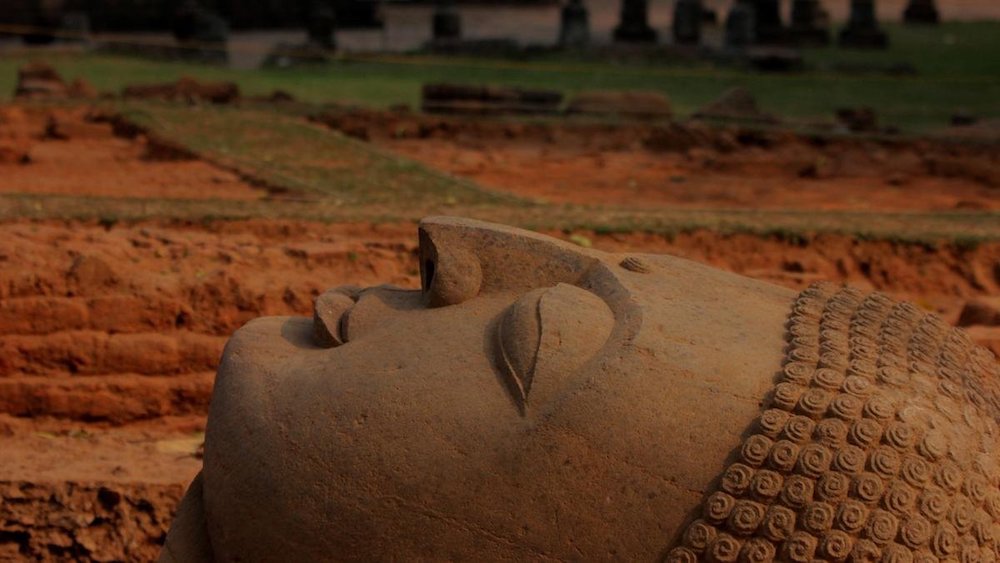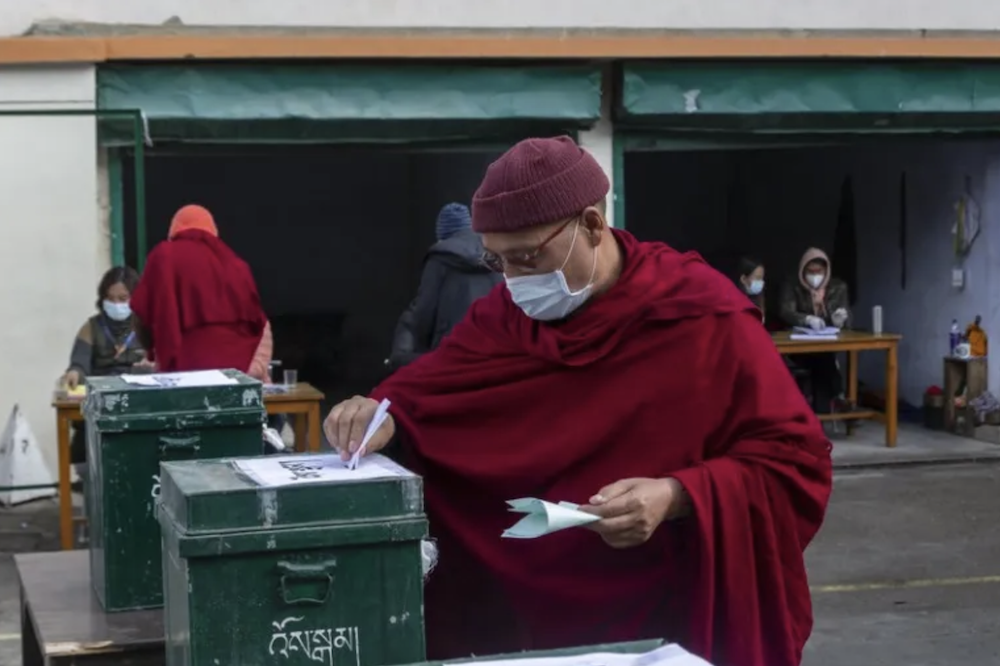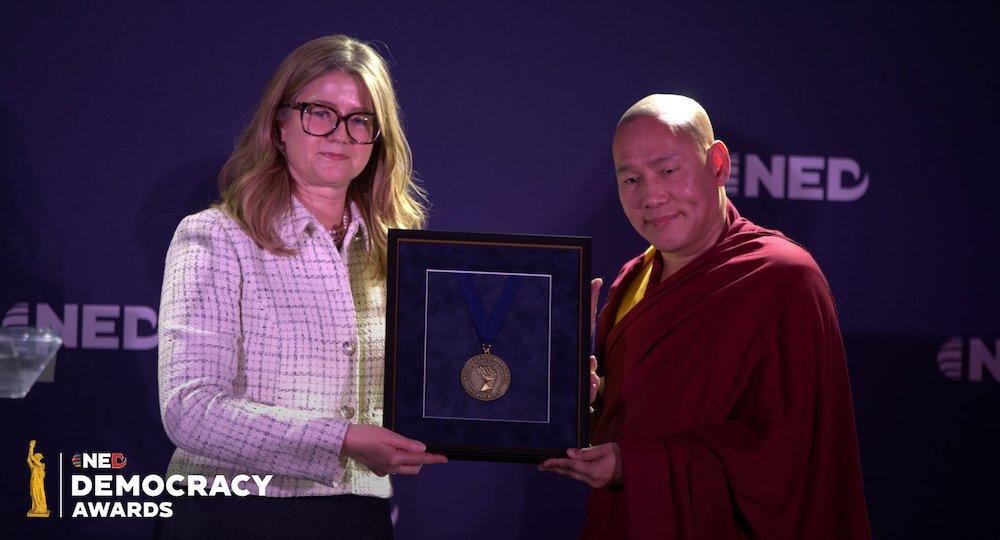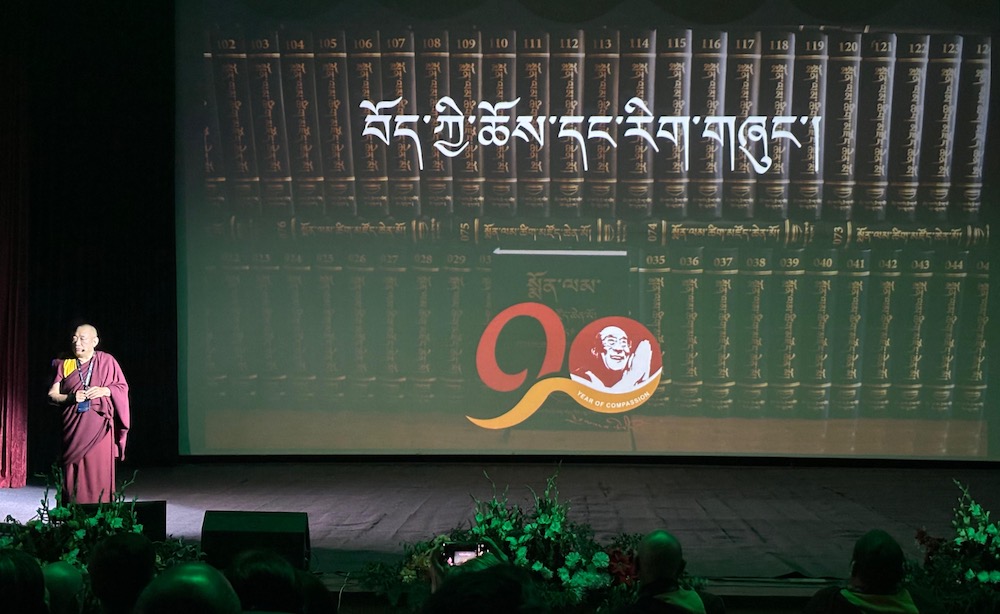Tsering Dhundup
DHARAMSHALA, Feb. 26: Indian archaeologists have unearthed a 1.4-meter-tall Buddha head, along with ancient Buddhist tablets and stupas dating back over 1,500 years, at the Ratnagiri Buddhist heritage site in Odisha’s Jajpur district.
The excavation, conducted by the Archaeological Survey of India (ASI), has brought renewed global attention to Ratnagiri’s historical significance as a major Vajrayana (Tantric Buddhism) centre. The excavation of this artefact took nearly two months to complete.
According to The Hindu, the excavation has also discovered a series of stupas featuring Vajrayana Buddhist deities. Various stone carvings with Sanskrit Kutila script have been found, and it is believed that the small niches in the minor stupas previously housed statues of Buddhist deities and goddesses. These findings further emphasise the significance of this site as an important centre for Vajrayana Buddhism.
Among the significant discoveries are Buddha’s throne and palm prints, as well as statues representing the five Tathagatas (Buddhas) of Mahayana and Vajrayana traditions: Amoghasiddhi, Ratnasambhava, Akshobhya, Amitabha, along with statues of Goddess Tara, Marichi, and the Bodhisattva Avalokiteshvara (Chenrezig). Some of these artefacts are estimated to be approximately 1,500 years old.

Ratnagiri, one of the three Buddhist sites known as the “Diamond Triangle” along with Lalitgiri and Udayagiri in Odisha, was once a thriving centre of Buddhist learning and pilgrimage. Experts believe the site, strategically located amid the Brahmani, Kimiria, and Birupa rivers, provided an ideal environment for Buddhist monks and scholars. Historical evidence suggests that Ratnagiri was inhabited from the 5th to the 13th century, with Vajrayana Buddhist activities continuing until the 16th century.
The first archaeological exploration of Ratnagiri in Odisha was conducted in 1906 when Manmohan Chakravarti discovered Buddhist relics in the area. Later, from 1958 to 1961, Debala Mitra, the first female director of the Archaeological Survey of India, led another exploration. The current third phase, running from December 2024 to March 2025, is being conducted under the authorisation of the Archaeological Survey of India with the aim of revealing partially visible Buddhist relics in the region.
The Indian state of Odisha, which was part of the territory involved in Emperor Ashoka’s Kalinga war in the 2nd century BCE, later saw significant growth in Buddhism. Researchers speculate that because ancient Odisha had extensive maritime trade connections with Southeast Asian countries, Buddhism may have spread to these regions through these cultural exchanges.
The Archaeological Survey of India plans to continue the current excavation project for about another month, with further research anticipated to explore deeper cultural connections between Ratnagiri and Southeast Asia.











3 Responses
Thanks to the Archaeological Survey of India for uncovering this sacred sites. Odisha has been known by Western Scholars and others, to have been an important site of Vajrayana Buddhist Practice. This excavation validates their research. More importantly, it could provide Buddhist Vajrayana Practitioners with a valuable sacred site to engage in religious pilgrimage and practice. It is my fervent prayer that the management of that site will be given to Indian Nationals who are Buddhists, particularly those who are Vajrayana Practitioners. The latter are found in Ladakh, North East India, and in and around the various encampments of Tibetan Refugees and their offspring (Delhi, Dharmsala, Dehra Dun, Bylakuppe, Sarnath, Odisha). There is already a Tibetan Vajrayana Monastery in Odisha State, Founded by His Holiness Jigdral Yeshe Dorje, who was the first Lama nominated to the post of The Head of the Nyingma School of Buddhism, by His Holiness the Dalai Lama, shortly after the exodus of Tibetan after the uprising in Lhasa, 1959. Sarva Mangalam!
This discovery of Buddhist artifacts and statues related to Vajrayana Buddhism in Odisha lend credence to the theory that Odiyana, the land the from where Gurupadma Sambhava came, could be Odisha and not Swat in Pakistan. Further research in this area is very important.
The influence is also seen further east in archeological sites as Paharpur in Bangladesh. Tibetans living in India should try to visit.
Happy Losar.